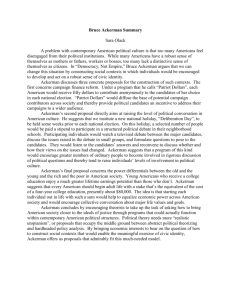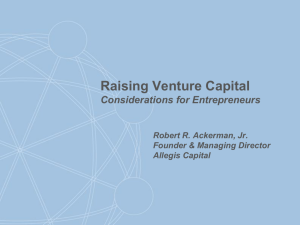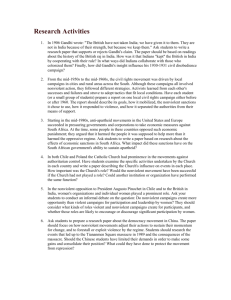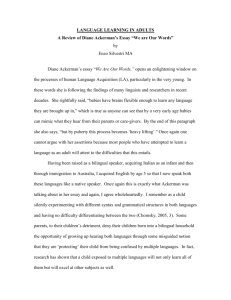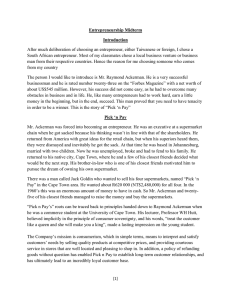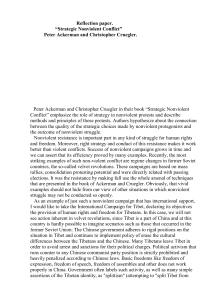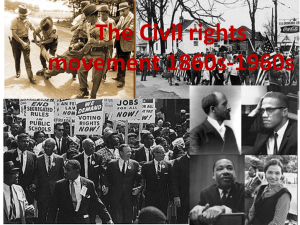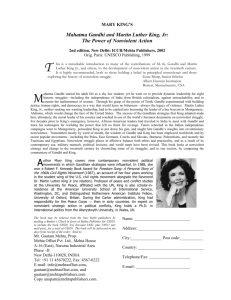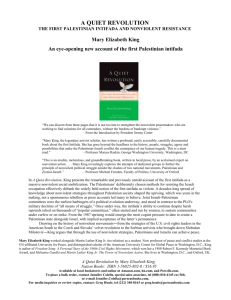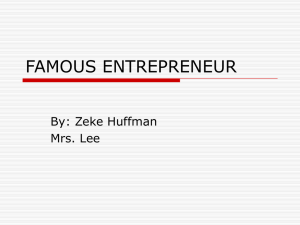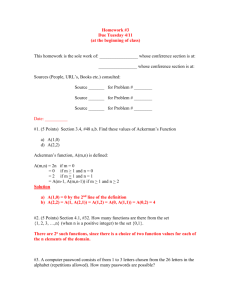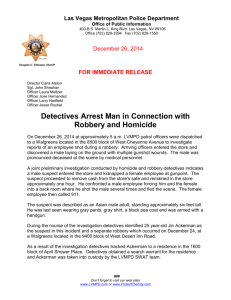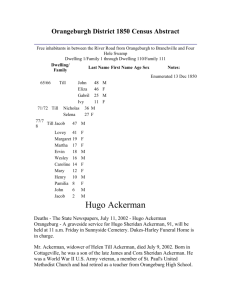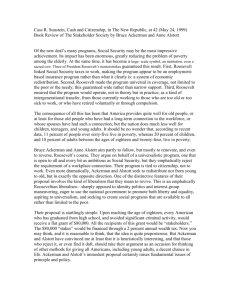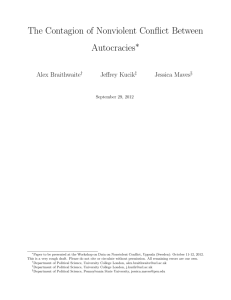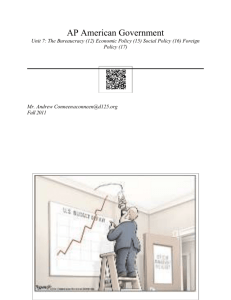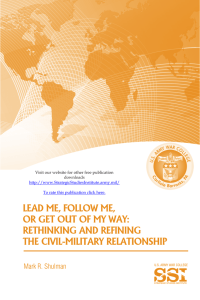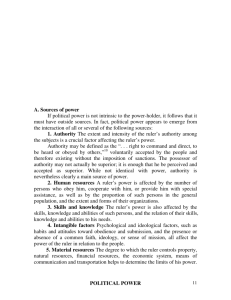Strategic Nonviolent Conflict
advertisement
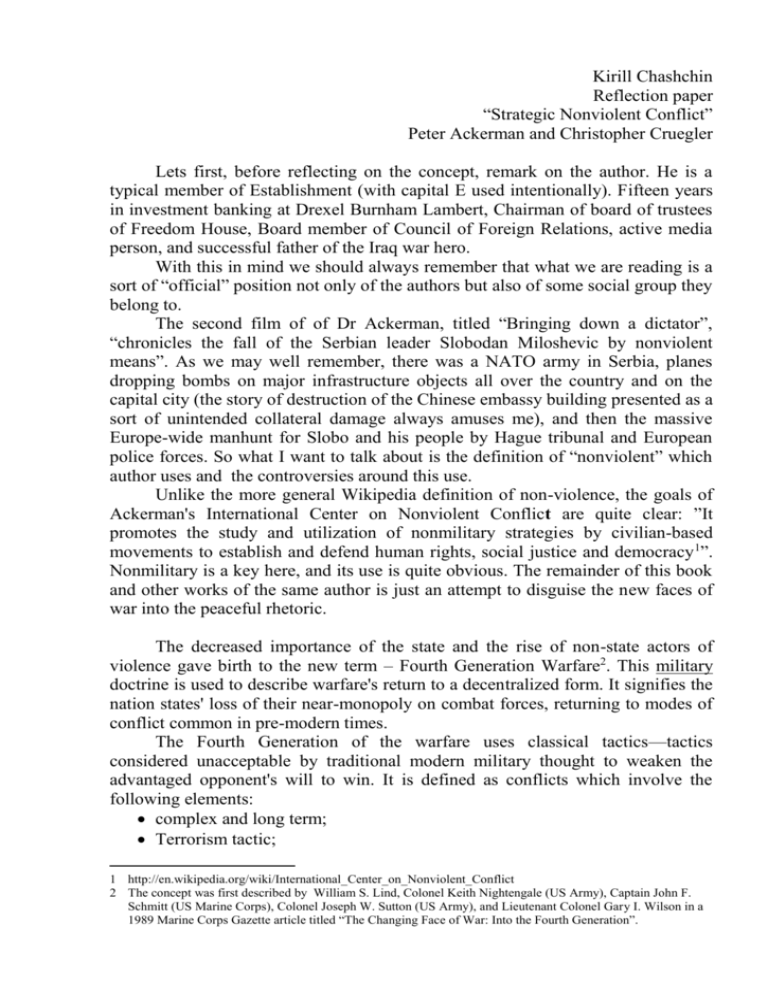
Kirill Chashchin Reflection paper “Strategic Nonviolent Conflict” Peter Ackerman and Christopher Cruegler Lets first, before reflecting on the concept, remark on the author. He is a typical member of Establishment (with capital E used intentionally). Fifteen years in investment banking at Drexel Burnham Lambert, Chairman of board of trustees of Freedom House, Board member of Council of Foreign Relations, active media person, and successful father of the Iraq war hero. With this in mind we should always remember that what we are reading is a sort of “official” position not only of the authors but also of some social group they belong to. The second film of of Dr Ackerman, titled “Bringing down a dictator”, “chronicles the fall of the Serbian leader Slobodan Miloshevic by nonviolent means”. As we may well remember, there was a NATO army in Serbia, planes dropping bombs on major infrastructure objects all over the country and on the capital city (the story of destruction of the Chinese embassy building presented as a sort of unintended collateral damage always amuses me), and then the massive Europe-wide manhunt for Slobo and his people by Hague tribunal and European police forces. So what I want to talk about is the definition of “nonviolent” which author uses and the controversies around this use. Unlike the more general Wikipedia definition of non-violence, the goals of Ackerman's International Center on Nonviolent Conflict are quite clear: ”It promotes the study and utilization of nonmilitary strategies by civilian-based movements to establish and defend human rights, social justice and democracy 1”. Nonmilitary is a key here, and its use is quite obvious. The remainder of this book and other works of the same author is just an attempt to disguise the new faces of war into the peaceful rhetoric. The decreased importance of the state and the rise of non-state actors of violence gave birth to the new term – Fourth Generation Warfare2. This military doctrine is used to describe warfare's return to a decentralized form. It signifies the nation states' loss of their near-monopoly on combat forces, returning to modes of conflict common in pre-modern times. The Fourth Generation of the warfare uses classical tactics—tactics considered unacceptable by traditional modern military thought to weaken the advantaged opponent's will to win. It is defined as conflicts which involve the following elements: complex and long term; Terrorism tactic; 1 http://en.wikipedia.org/wiki/International_Center_on_Nonviolent_Conflict 2 The concept was first described by William S. Lind, Colonel Keith Nightengale (US Army), Captain John F. Schmitt (US Marine Corps), Colonel Joseph W. Sutton (US Army), and Lieutenant Colonel Gary I. Wilson in a 1989 Marine Corps Gazette article titled “The Changing Face of War: Into the Fourth Generation”. A non-national or transnational base—highly decentralized; A direct attack on the enemy's culture; Highly sophisticated psychological warfare, especially through media manipulation and lawfare; All available pressures are used - political, economic, social and military; Occurs in low intensity conflict, involving actors from all networks; Non-combatants are tactical dilemmas; Lack of hierarchy; Small in size, spread out network of communication and financial support; Use of Insurgency and Guerilla tactics; Colonel John Boyd (1927-1997)3 with his - well known to US strategists and almost unknown in our country - OODA loops (Observe-Orient-Decide-Act) could very well be considered as a proponent of the non-violence in the Ackerman's meaning. Two Chinese colonels in the official Chinese doctrinal paper titled “Unrestricted Warfare4” in 1999 described the use of “non-military means” which are the same “nonviolence” in the Ackerman's sense as a tool for a weak state to win a war against the more powerful state, frequently avoiding starting the war in the convenient 19-20 century sense. Ackerman as a member of Establishment was quite good to be able to convince a lot of people that what he is describing in this book and subsequent works is not a war. It is some “nonviolence” which is quite good for established social scientists and “peaceful democracy fighters” to engage in. The fact is this is the one of the faces of the modern quiet wars which always have to have the qui prodest question to be posed and answered before the further full analysis of events. 3 See more at http://en.wikipedia.org/wiki/John_Boyd_%28military_strategist%29 4 Unrestricted Warfare. Qiao Liang and Wang Xiangsui. Beijing: PLA Literature and Arts Publishing House, February 1999. Available at http://cryptome.org/cuw.htm
